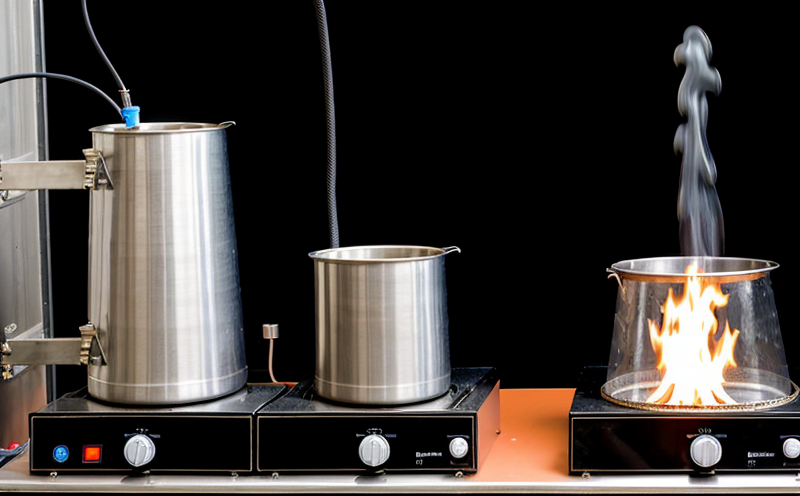Calorimetric Analysis of Building Materials
The calorimetric analysis of building materials is an essential process in ensuring fire safety and compliance with international standards. This service involves the measurement and quantification of heat release from a material sample under controlled conditions, providing insights into its flammability and thermal behavior.
Calorimetry plays a critical role in evaluating the combustibility properties of building materials such as insulation boards, ceiling panels, wall coverings, and structural elements. By conducting this analysis, we can determine how much heat is released per unit mass or volume when a material burns. This information is crucial for assessing the potential risk of fire spread within buildings.
Our calorimetric testing follows internationally recognized standards like ISO 56601 and ASTM E2387 to ensure accuracy, consistency, and reliability of results. Compliance with these standards ensures that our clients can confidently use their materials in fire safety applications.
The primary goal of this service is not only to meet regulatory requirements but also to optimize product performance. Understanding the heat release characteristics helps manufacturers develop safer and more efficient building products.
During calorimetric analysis, we subject a representative sample of the material to controlled combustion conditions in a calorimeter. The calorimeter measures the amount of heat released during this process. This data is then analyzed using advanced software tools to calculate key parameters such as Heat Release Rate (HRR), Smoke Production Rate (SPR), and Oxygen Consumption Index (OCI).
Calorimetric analysis provides valuable information beyond just fire safety compliance. It can also inform decisions related to product design, material selection, and process optimization. For instance, understanding the HRR of a material helps in designing more effective fire barriers or selecting materials that contribute less to overall heat release during a fire event.
The accuracy of calorimetric analysis is further enhanced by using state-of-the-art equipment and experienced technicians who understand both the theoretical aspects and practical applications of this testing method. Our laboratories are equipped with high-precision calorimeters capable of measuring even small increments in heat release, ensuring precise results.
Scope and Methodology
| Test Parameters | Description |
|---|---|
| Sample Preparation | The sample should be cut to standard dimensions and weights as per ISO 56601. |
| Calorimeter Specifications | Use a calorimeter with an air flow rate of 20 ± 1 L/min at 30 ± 2°C. |
| Temperature Control | The calorimeter should maintain a temperature within ±5°C of the specified value. |
The testing procedure involves placing the prepared sample into the calorimeter and igniting it. The system records the heat release over time, generating a curve that represents how much heat is being produced at any given moment during combustion.
Following ignition, the calorimeter measures the heat released by the burning material until complete combustion or the end of the test period. During this process, various other parameters are continuously monitored including temperature, pressure, and oxygen concentration inside the calorimeter.
The collected data is then analyzed using specialized software to extract meaningful information about the sample's behavior during combustion. This includes calculating the Heat Release Rate (HRR), which quantifies the amount of heat released per unit time, and the Smoke Production Rate (SPR), which indicates how rapidly smoke is generated.
Industry Applications
- Benchmarking and Comparison: Calorimetric analysis allows companies to compare different materials based on their heat release properties, aiding in product improvement and competitive advantage.
- Research & Development: Understanding the combustion characteristics of new materials can guide R&D efforts towards safer and more efficient products.
- Compliance Assurance: Ensuring that building materials meet stringent fire safety regulations is critical for manufacturers and architects alike.
Use Cases and Application Examples
| Application | Description |
|---|---|
| Insulation Boards | Evaluating the heat release characteristics of insulation materials used in residential and commercial buildings. |
| Ceiling Panels | Assessing the flammability properties of ceiling panels intended for use in public spaces like shopping malls or auditoriums. |
| Wall Coverings | Determining the combustion behavior of wall coverings used in office buildings and other enclosed structures. |
One notable example is a recent project where we conducted calorimetric analysis on new ceiling panels designed for use in hospitals. The results were instrumental in confirming that the panels met strict fire safety requirements set forth by local authorities.





